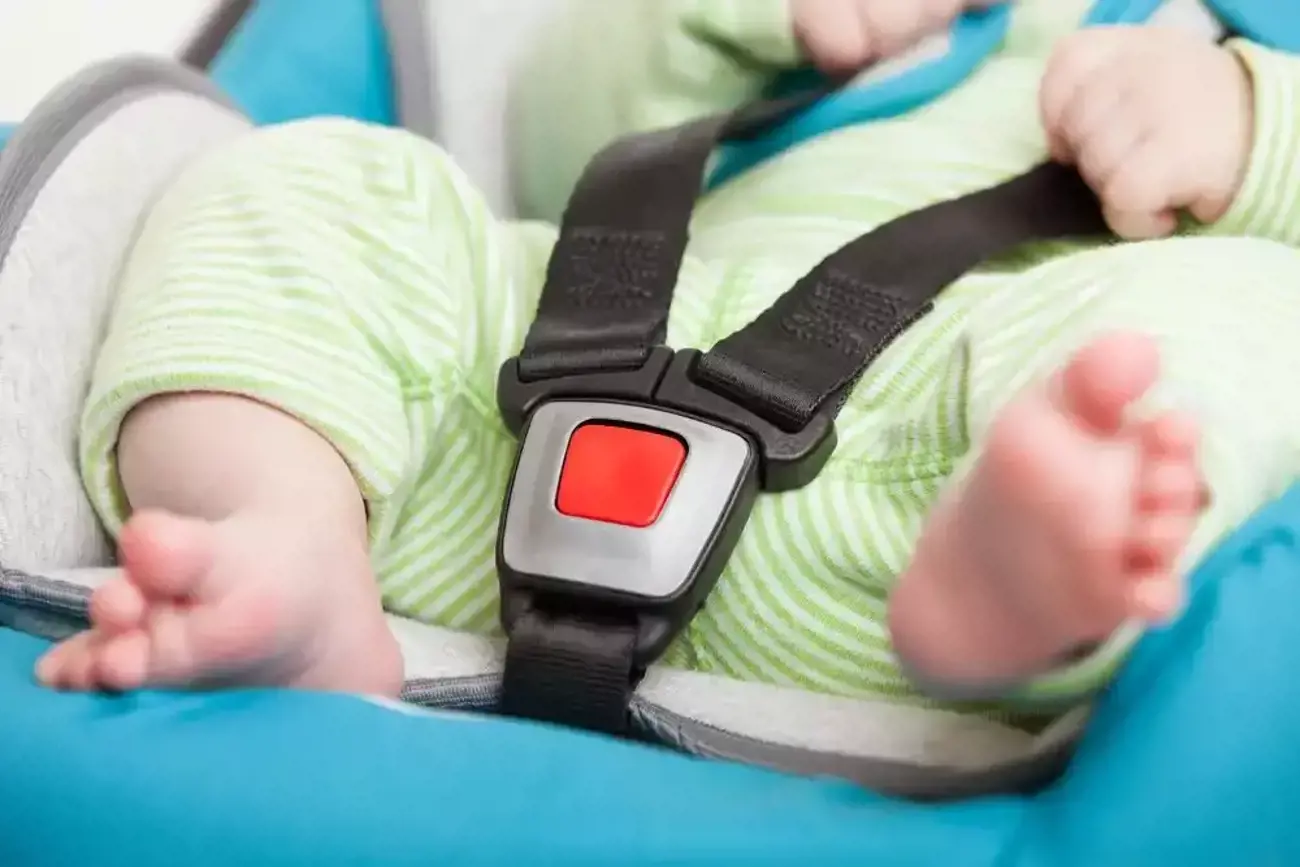Whether you're doing the child care drop-off or running a mum taxi on the weekend, car travel definitely streamlines family life. Although the road does come with risk, and most families do 'click, clack, front and back', a new poll suggests that we're not buckling up our children as safely as we could be.
For its National Child Health Poll, the Royal Children's Hospital (RCH) asked 1,620 Australian parents about their knowledge and use of child restraints and booster seats. Based on their responses, it seems that many children are not travelling in the safest restraint or position in the car, so let's look at car seat safety and the RCH poll in more detail.
What is the current law and recommended safest practice for child restraints in vehicles?
In Australia, there are age-based car seat safety laws that must be adhered to, plus size-based recommendations for safest practice. As you’ll see, there's some inconsistencies between the law and safety recommendations, but because children come in all shapes and sizes, you're advised to go that step further and use the safest possible child restraint practices in your car:
| Type of car seat | What the law says | Recommended safest practice |
|---|---|---|
| Rear-facing car seat | Legally, babies must travel in a rear-facing restraint (i.e. car seat or baby capsule) until they're at least six-months-old. | To protect their head and neck, it's best to keep your baby in this seat for as long as they fit (i.e. until their shoulders are above the height markers on the restraint) and keep them rear-facing until at least two years of age. |
| Forward-facing car seat | Children must use this seat until they’re at least four-years-old. | With its in-built harness, the safest practice is to keep your child in this seat until they’ve outgrown it (which is often well after they’ve turned four). |
| Booster seat | Children must use a booster seat until at least seven years of age. Although booster cushions are legal, they're not recommended due to safety concerns. Stick with a booster seat instead. |
Once your child has outgrown their forward-facing car seat, a booster seat raises their body so the adult seatbelt fits their child-sized shoulder, chest and hips correctly. It's recommended that your child uses a booster until they're 145cm tall or can pass this five-step test:
|
| Adult lap-sash seatbelts | From the age of seven, children can legally travel with an adult seatbelt and no booster seat. | As mentioned above, it's best practice to keep your child in a booster seat until they're 145cm tall to avoid serious injuries in the event of an accident. |
This means that although it might be legal to move your child into the next car seat type or buckle them into an adult seatbelt, it's not necessarily the safest course of action. Think about your child's size, as well as their age, to keep them safe and secure on the road.
What are some key findings from the National Child Health Poll?
According to the nation-wide poll, 'The vast majority of Australian parents do comply with the law when it comes to using a car seat for their child,' but not so many are going that step further and following the recommended safest practices.
The poll found that:
- Babies and toddlers are being moved out of their rear-facing seat too early. Two-thirds of children (63 per cent) are sitting in a forward-facing car seat by the time they're 18-months-old, despite it being safer to stay in a rear-facing seat till at least two years of age.
- Children are transitioning out of their booster seat much earlier than is recommended. Two-thirds (63 per cent) of children aged seven to 10 use an adult seatbelt without a booster seat, even though they're under the 145cm safe height, and 35 per cent first get rid of their booster at seven-years-old.
- Children are sitting in the front passenger seat too early. Half of children (47 per cent) aged seven to 12 sit in the front seat, even though this position is twice as dangerous in a crash as sitting in the back seat.
- There's a knowledge gap around the use of adult seatbelts by children. Although it's legal for a seven-year-old to use an adult seatbelt without a booster seat, just three per cent of parents knew that their child should be 145cm tall to safely use this seatbelt without a booster (i.e. they weren't aware of the recommended safest practice).
What can we take away from the poll findings?
Although parents are law-abiding and focused on children's safety, this poll indicates that we need to slow down and follow recommended safest practices when it comes to moving children to a new restraint or position in the car.
Instead of shifting your baby from a rear-facing to a forward-facing car seat, keep them entertained with toys and mirrors. And if your eight-year-old thinks they’re too old for a booster seat, explain why the adult seatbelt isn't a one-size-fits-all solution.
By moving children out of car seats and booster seats too early, we're placing them at an increased risk of serious injury or death in the case of an accident, so instead of just following the law, it's time to go that extra mile when it comes to our knowledge and practice of car seat safety.
References
RCH National Child Health Poll Report
RCH National Child Health Poll Key Findings
Further reading
Previous RCH National Child Health Polls have looked at topics such as kids and food, child mental health and bullying. They make for interesting reading and you can explore past polls here.


































